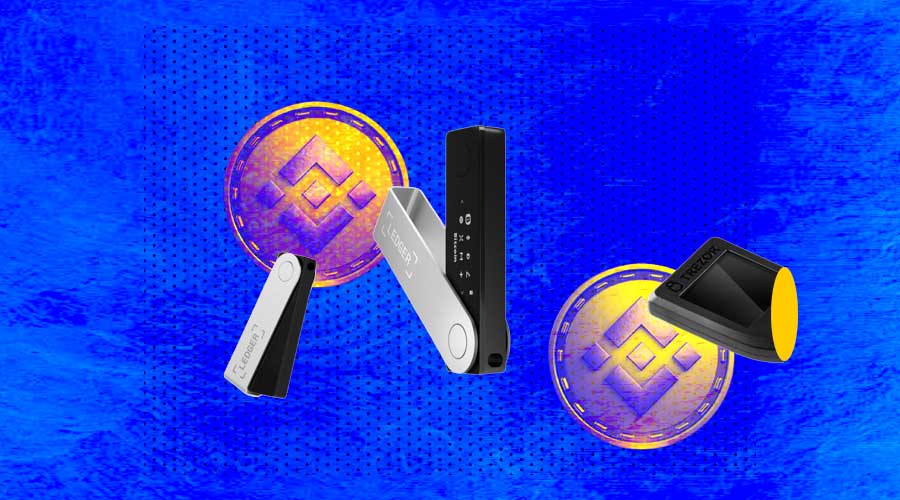 Crypto hardware wallets! The ultimate guide to securely storing and managing your digital assets
Crypto hardware wallets! The ultimate guide to securely storing and managing your digital assets
Welcome to “What is a Crypto Hardware Wallet? A Complete Guide.” This comprehensive guide will delve into the fascinating world of crypto hardware wallets and explore their essential role in securing your digital assets. With the rising popularity of cryptocurrencies, protecting your funds from potential online threats has become crucial. A crypto hardware wallet offers a secure and offline storage solution that ensures the safety of your private keys, making it an indispensable tool for any crypto enthusiast. Join us as we demystify the concept of crypto hardware wallets, understand their functionalities, and learn how to choose the right one for your needs. Let’s begin our journey into the realm of secure crypto storage.
Understanding Crypto Hardware Wallets
What is a Crypto Hardware Wallet?
A crypto hardware wallet, also known as a cryptocurrency hardware wallet or a cold wallet, is a physical device designed to securely store private keys, which are essential for accessing and managing your cryptocurrencies.
How Does a Crypto Hardware Wallet Work?
A crypto hardware wallet operates by generating and storing your private keys offline within the device itself. When you want to initiate a transaction or access your cryptocurrencies, the hardware wallet signs the transaction using the private key stored securely within the device.
Benefits of Using a Crypto Hardware Wallet
Enhanced Security
The primary advantage of using a crypto hardware wallet is its enhanced security. Hardware wallets protect against online vulnerabilities such as phishing attacks, malware, and hacking attempts by keeping your private keys offline.
Offline Storage
Another benefit of hardware wallets is their offline storage capability. By storing your private keys offline, hardware wallets eliminate the risk of exposure to the internet, making them impervious to online threats. This offline storage approach, often called “cold storage,” ensures that your cryptocurrencies remain safe even if your computer or mobile device is compromised.
User-Friendly Interface
Crypto hardware wallets are designed to be user-friendly, even for individuals with limited technical knowledge. These devices typically come with a straightforward interface and intuitive navigation, making it easy to manage your cryptocurrencies.
Portability and Accessibility
Despite their offline storage capabilities, crypto hardware wallets offer excellent portability and accessibility. These compact devices are usually small enough to fit in your pocket or a keychain, enabling you to carry them anywhere. This accessibility ensures you always have control over your cryptocurrencies, without relying on a centralized platform.
Setting Up and Using a Crypto Hardware Wallet
Step 1: Choose a Reliable Hardware Wallet
When selecting a crypto hardware wallet, opting for a reputable and trustworthy brand is crucial. Research different options available in the market and consider factors such as security features, supported cryptocurrencies, user reviews, and ease of use. Popular hardware wallet brands include Ledger, Trezor, and KeepKey.
Step 2: Purchase and Receive the Hardware Wallet
Once you have chosen a hardware wallet, purchase it from an authorized and reliable source. Ensure the packaging is sealed and tamper-proof to avoid potential security risks. When you receive the hardware wallet, double-check that it is genuine and hasn’t been tampered with during transit.
Step 3: Install the Wallet Software
Install the wallet software on your computer or mobile device to begin using your hardware wallet. Visit the official website of the hardware wallet manufacturer and download the appropriate software for your operating system.
Step 4: Initialize and Secure Your Hardware Wallet
After installing the wallet software, you will be prompted to initialize your hardware wallet. You will be asked to set up a PIN code and create a recovery phrase during this process. The PIN code will serve as an additional layer of protection, and the recovery phrase will be used to restore your wallet in case of loss, damage, or theft.
Step 5: Transfer and Manage Your Cryptocurrencies
With your hardware wallet set up and secured, you can transfer your cryptocurrencies to the device. Connect your hardware wallet to your computer or mobile device using cable or wireless connectivity.




